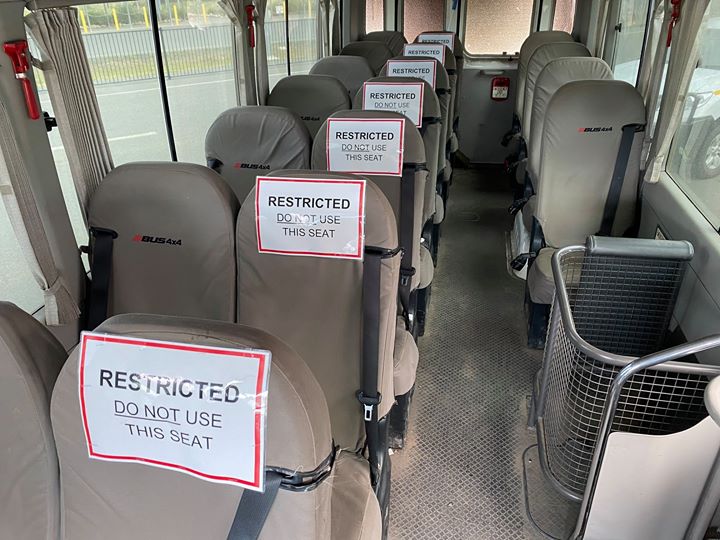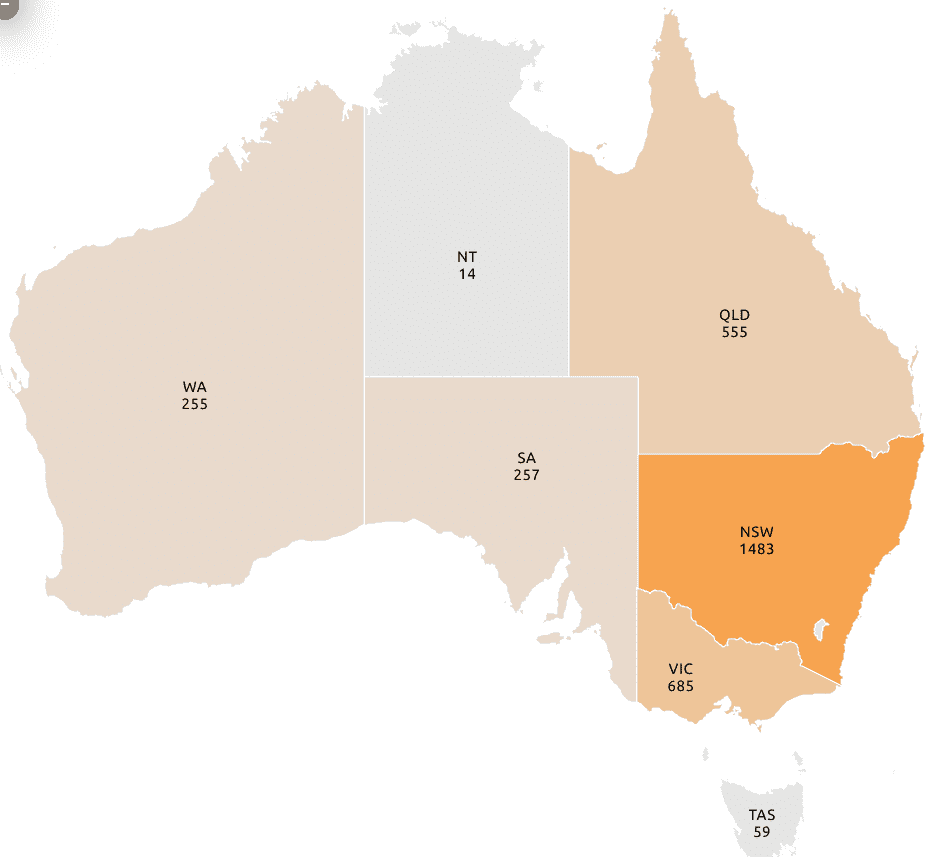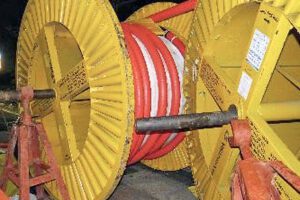FIFO workers COVID-19 Miners across Australia are progressively implementing plans to scale back interstate FIFO operations in the midst of the COVID-19 outbreak.
Fortescue Metals Group (FMG) yesterday alerted mineworkers that some FIFO swings would move to four on two off while others would move to two on two off swings. The move will aim to limit opportunities for adding to the COVID-19 propagation in communities and potential impacts on regional communities.
FMG CEO officer Elizabeth Gaines told the West Australian that miners had the support of governments through exemptions as “essential services.” But Ms Gaines added that the industry must also respect the importance of the exemptions and play its part in reducing opportunities for the spread of the virus
“We believe implementing a temporary change to our site operational roster will contribute to the safety of our team, their families and the broader community, as well as help us fulfil our responsibility to provide the Fortescue family with secure employment during this uncertain time,” she told the West Australian.
“We have a strong track record of doing what we say we are going to do.”
“The iron ore industry and the Pilbara more broadly is the engine room of WA and Australia’s economy and it is our responsibility to make sure we have a healthy, committed workforce that allows us to continue operating during this crisis.”
FMG’s new roster arrangements will reduce movements on sites by approximately 40 per cent. The company plans these measures to be implemented for three months, subject to conditions associated with COVID-19 spread.
Other miners are also moving rapidly with changes to FIFO rosters including majors like Rio Tinto, BHP & Saracen, South 32 and Northern Star.
BHP’s Edgar Basto told the Australian Financial Review that BHP “was talking with its crews on Friday to understand what roster changes might be feasible before finalising a decision.”

”We are looking at what we can do about rosters. It is good that we are looking at reducing travelling to the mine sites. But we also need to consider the mental health of people and how they will react when we [go] to different rosters,” he told journalists.
BHP Iron Ore operations recently temporarily relocated a range of mineworkers and critical off-site crew like tug boat operators to Western Australia in a move to mitigate effects from State-based quarantine requirements.
The Minerals Council of Australia has also flagged in the Resources sector – National COVID-19 protocols that longer shift cycles will be used to minimise travel frequency
Community concern may drive ongoing changes to FIFO operations
Last week a range of regional communities expressed concerns regarding potential community risks of COVID-19 with FIFO operations. Queensland Member for Traeger Robbie Katter told local media that prevalence of fly-in, fly-out and drive-in, drive-out workers was putting mining communities at risk.
“It is deeply concerning that my office is getting anecdotal reports coming in daily of mineworkers flying into site and working with locals, after coming in from all over the country. Some mining companies are making some effort to limit the risks, but presumably, there is a large variance in quality control between different mine sites.”
“There is a growing anger among local residents, such as in Mount Isa, against this practice still being tolerated at all.
“At the very least, these people need to be assured that there are some strict standards being followed by the mining industry.”
At the heart of the concerns is how smaller medical facilities in regional communities could manage a COVID-19 outbreak if one occurred through community transmission and required hospital admissions. Towns like Moranbah in central Queensland runs a twelve-bed hospital for a community of almost 9,000 people while the closest regional hospital at Mackay holds around 350 beds for a population of over 125,000 residents.
There are three major hospital facilities in the Pilbara region, located in Newman, South Hedland and Karratha with a smattering of health units in Onslow, Paraburdoo, Roebourne and Tom Price. Beds across the Pilbara reportedly total 180 according to WA health. The region’s population was around 116,000 back in 2013 according to the WA Department of Primary Industries & Regional Development. It’s potentially more now! With a 1% hospitalisation rate from COVID-19 bed numbers in the Pilbara would need to increase to as least 1160 without allowing for other sicknesses in the community.
Numbers on the availability of intensive care facilities in regional communities is scant. What is clear, is that the probability of regional Australian communities successfully managing a substantial COVID-19 outbreak is unlikely. There is no denying the fact that if community transmission of COVID-19 occurred in any regional Australian community, the outcome could be devastating.
This is the message the communities want to convey to FIFO workers for COVID-19.
What COVID-19 controls should look like for FIFO operations?
This is an emerging issue and one that major miners across Australia are considering on a daily basis. The Minerals Council of Australia has issued a range of national protocols in order to ensure community and mineworker transmissions are minimised.
Tanya Constable from the Mineral’s Council said last week that “The resources sector joins with national governments and the community in working to stop the spread of the novel coronavirus, COVID-19. The health, social and economic implications of the pandemic demand a united and determined industry commitment.”
There are now requirements for mining companies to develop and implement COVID-19 management plans that address the range of concerns across:
- Education and communication;
- Families and mental health;
- Travel and accommodation arrangements;
- Safety at work;
- Incident response;
- Critical suppliers and contractors;
- Management of risks to Indigenous communities;
So what does it means for those at the face?
Mineworkers across the industry are already rising to the task of ensuring community transmission of COVID-19 is minimised. Health departments are now requiring strict protocols associated with transport operations including:
- Avoiding close contact during transport, including for example by reducing the numbers of people travelling on buses and aircraft;
- Ensuring that the buses and aircraft are thoroughly cleaned between disembarking passengers and embarking passengers;
- Temperature testing at airports of passengers boarding aircraft;
- Identifying any persons exhibiting symptoms, including coughing and sneezing, should not travel and immediately isolate, and seek medical advice.
- Minimising the mass movement of people, specifically reducing the reliance of work arrangements such as FIFO that move large numbers of people simultaneously over long distances, during the COVID-19.
- Maintaining a 1.5 – 2-metre distance whenever possible and limiting the number of people in an enclosed space to one person per four square metres
- For mining camps or any other locations where persons are stationed in residential accommodation while working, these areas should consider additional hygiene and infection control measures, including:
- ceasing ‘hot bedding’, thereby limiting contact between employees;
- cleaning each room thoroughly between uses, including changing and washing the linen. Please refer to the Australian Department of Health’s factsheet for hotels, which includes information on cleaning;
- maintaining appropriate infection control in kitchens and food preparation areas. Food Standards Australia and New Zealand provide guidance on maintaining safe and clean kitchens;
- ensuring that FIFO workers have suitable accommodation for self-quarantine if an employee meets these requirements and following the current testing and quarantine guidelines for everyone;
- maintaining social distancing in camps, including when undertaking recreational activities, seeking to limit the number of people gathered in one location, for example, during outdoor sporting activities. Gyms and other indoor sports facilities are now required to be closed. You may wish to refer to the Australian Government factsheet on social distancing;
- Limiting the movement of workers from camps and into the broader community;
The information above – requirements from the Queensland Health Department for FIFO workers COVID-19. Of course, the list goes on to include minimising travel to sites and overseas destinations plus additional requirements.
View the Western Australia Pandemic Plan here
You can look what BHP is doing here
Want to find out the latest information on cases for COVD-19. View our live data here
Read more Mining Safety News















Add Comment